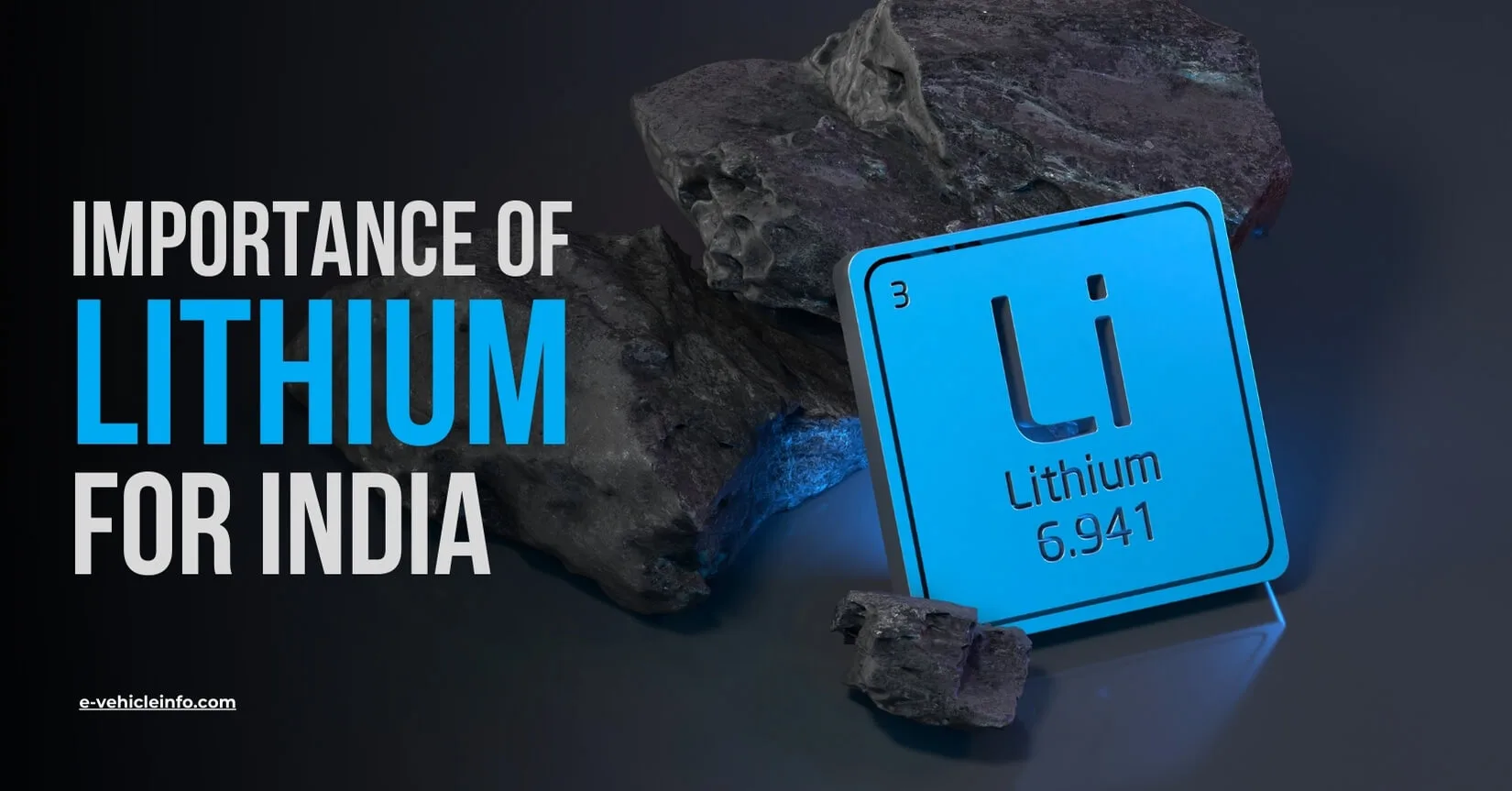
India, a rapidly growing economy with ambitious renewable energy goals, is increasingly recognizing the important role lithium plays in its future. As a key component in lithium-ion batteries, lithium is essential for powering electric vehicles, energy storage systems, and other advanced technologies.
Lithium is essential for electric vehicle batteries, energy storage, and electronics, making it a highly sought-after resource. This growing demand has led to its nickname, “new white gold.”
Lithium-ion parts can often be recycled. Nickel Manganese Cobalt and Lithium Iron Phosphate are two of the more popular lithium-ion chemistries. Therefore, it is termed as new white gold due to its prices and the value it generates.
Li-Ion Batteries have excellent high-temperature performance, a high power-to-weight ratio, great energy efficiency, and minimal self-discharge.
However, at its core, lithium-ion refers to a battery based on charge and discharge processes between a lithiated metal oxide cathode and a graphite anode.
Lithium-ion can refer to a wide range of chemistries that help an electric vehicle run on the roads. During the discharge and recharging of a Li-ion battery, lithium ions go from the negative electrode through an electrolyte to the positive electrode.
The positive electrode in lithium-ion batteries is made of an intercalated lithium compound, while the negative electrode is commonly made of graphite.
The government of India has tried to incentivize the battery manufacturing industry by approving a production-linked incentive scheme of Rs. 18,000 crores to encourage the production, export, and storage of lithium-ion batteries, which are crucial for the creation of electric vehicles.
Through this program, the Union government hopes to establish a production capacity for Advanced Chemistry Cells (ACC) of 50-gigawatt hours (GWh) and a 5 GWh capacity for “Niche” ACC. Lithium-ion cells are essentially what ACCs are.
Within five years, manufacturers would have to pledge to establish a manufacturing facility with a minimum capacity of 5GWh and guarantee a minimum 60% local value addition.
The battery or cell maker will then be required to demonstrate a minimum investment of 225 crores per GWh within two years and grow it to 60% domestic value addition within five years in addition to achieving a domestic value addition of 25%.
With the help of this scheme, the government expects to save between 2 and 2.5 trillion yen due to a decrease in oil imports as a result of rising electric vehicle use.
The program is anticipated to hasten the adoption of zero-emission cars.
The Indian government has been actively promoting lithium exploration and development.
The Geological Survey of India (GSI) has undertaken numerous projects to assess the extent and quality of lithium deposits in these regions.
These efforts have been intensified in recent years, reflecting the growing importance of lithium in the global energy landscape.
The lithium-rich regions in India are primarily concentrated in the northeastern states and central India.
States like Jammu & Kashmir, Arunachal Pradesh, Rajasthan, Jharkhand, Meghalaya, Nagaland, and Chhattisgarh have been identified as potential hotspots for lithium exploration and extraction.
India’s Lithium reserves are on a tiny area of land recently studied in Southern Karnataka’s Mandya district and have been assessed to be 14,100 tonnes by scientists at the Atomic Minerals Directorate (under India’s Atomic Energy Commission).
Also, it was the first lithium deposit site ever discovered in India.
Meanwhile, there is experimental work being done to see if lithium can be extracted from the brine pools in Rajasthan and Gujarat as well as the mica belts in Odisha and Chhattisgarh.
Lithium-ion batteries have become ubiquitous in modern life due to their high energy density, long cycle life, and lightweight design.
They power a wide variety of devices and applications, including:
While lithium-ion batteries have dominated the market for their high energy density and long cycle life, researchers and manufacturers are actively exploring alternatives to address concerns such as cost, safety, and resource scarcity.
Here are 5 alternatives to lithium options:
India has learned a lot of lessons from China over the past ten years, China has aggressively developed in the EV battery market, capturing every link in the supply chain to become the industry leader in e-mobility.
Due to significant R&D expenditures, supportive government regulations, foreign direct investment inflows, and aggressive acquisition of raw material resources globally, China is currently the market leader for next-generation EVs.
This post was last modified on September 3, 2024 12:21 pm
In a major stride toward sustainable mobility, the Himachal Pradesh Police have incorporated six custom-modified Tata Curvv electric vehicles into…
In India, the automotive and transport industry is undergoing significant changes. This transformation isn't just about improving roads and infrastructure;…
Montra Electric, the clean mobility brand from the prestigious Murugappa Group, has launched the All-New Super Auto, a next-generation electric…
Union Minister Nitin Gadkari (Minister of Road Transport and Highways of India) has once again made a bold statement that’s got…
India’s electric four-wheeler (E4W) market slowed in September 2025, following a record-breaking August, with 15,038 units sold, representing an 18%…
India’s EV market hit 1,04,056 electric two-wheeler sales in September 2025. TVS, Bajaj, and Ather led the chart, while Ola…
This website uses cookies.